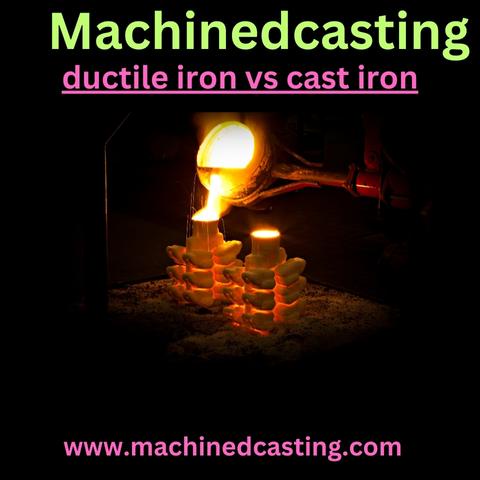Ductile iron vs cast iron are two distinct materials with unique properties and applications. Understanding their differences is crucial for choosing the right material for specific engineering, construction, or manufacturing needs. This guide aims to provide a detailed comparison between ductile iron vs cast iron, highlighting their characteristics, uses, and advantages.
-
Composition and Properties:
- Cast Iron: Cast iron is an alloy of iron, carbon, and silicon, with carbon content typically ranging from 2% to 4%. It's brittle and has a crystalline structure due to the presence of flakes of graphite.
- Ductile Iron: Ductile iron, also known as nodular or spheroidal graphite iron, contains graphite in nodular form, providing it with enhanced ductility compared to cast iron. It has a modified chemical composition, including magnesium or other nodulizing elements, resulting in a more flexible and elastic structure.
-
Strength and Durability:
- Cast Iron: Cast iron is known for its compressive strength and excellent wear resistance. However, it tends to be brittle and lacks ductility, making it susceptible to sudden failure under tension or impact.
- Ductile Iron: Ductile iron combines the strength and wear resistance of cast iron with improved ductility. It can withstand bending or flexing without fracturing and has better impact resistance, making it suitable for applications requiring toughness and reliability.
-
Applications:
- Cast Iron: Due to its hardness and wear resistance, cast iron finds applications in machinery parts, engine blocks, pipes, and architectural elements like decorative railings and manhole covers.
- Ductile Iron: Ductile iron is preferred in applications requiring both strength and flexibility, such as automotive components, gears, heavy machinery, and pipelines for water and sewage systems.
-
Machinability and Cost:
- Cast Iron: Cast iron is relatively easier to machine due to its brittle nature. It's also cost-effective and suitable for casting intricate shapes.
- Ductile Iron: Ductile iron vs cast iron is more challenging to machine compared to cast iron due to its increased ductility. While it may require specialized tools and techniques, its mechanical properties often justify the additional machining costs.
Conclusion: In summary, while both ductile iron vs cast iron have their distinct advantages, the choice between them largely depends on the specific requirements of the application. Cast iron's hardness and wear resistance make it suitable for certain applications, while ductile iron's superior ductility and strength make it preferable in scenarios demanding resilience and toughness.
Understanding the differences between these materials is essential for engineers and manufacturers to make informed decisions when selecting the most suitable material for their projects.


No comments yet